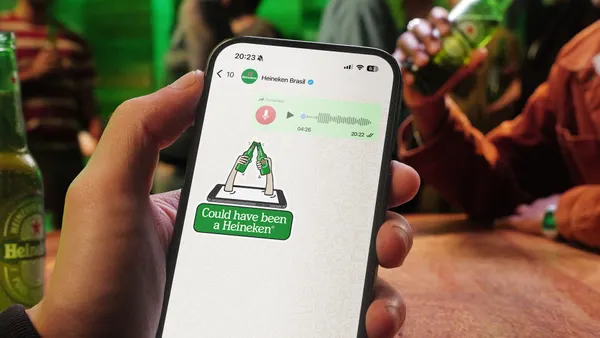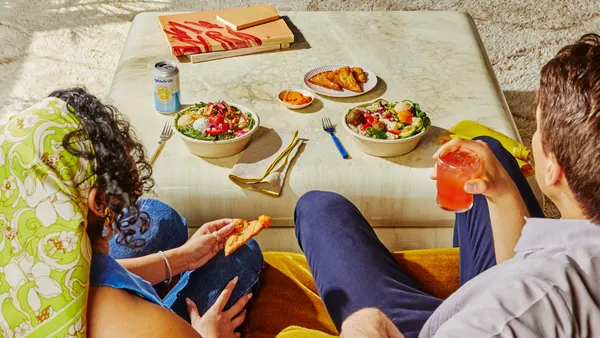Dive Brief:
- Kroger is launching voice-enabled ordering through the Google Assistant voice app, which can be accessed through iOS, Android, and Google Assistant. Customers can access their Kroger Grocery Pickup cart through the apps, according to the company's LinkedIn page.
- The grocer has launched the service in six banner stores so far including Fred Meyer, Fry’s Food and Drug, QFC, King Soopers/City Market and Ralphs. Kroger says more stores are will be added late this year and throughout 2019.
- Google has partnered with other grocers for voice-activated shopping, as well, including Walmart and Target.
Dive Insight:
Kroger’s addition of voice-activated ordering is a natural progression for the company considering the technology's growing popularity and the fact that many of Kroger’s competitors have already adopted the service.
According to a study from OC&C Strategy consultants, 20% of consumers who use voice-ordering use it to buy groceries. The firm expects voice ordering will increase from a $2 billion business currently to $40 billion by 2022. By that same year, Amazon Echo, Google Home and Sonos One will be installed in 55% of U.S. households, according to Juniper Research. With an anticipated jump like that, it’s smart for grocers like Kroger to at least explore adding voice ordering to their portfolio.
The two major platforms that allow voice-enabled ordering are Amazon’s Alexa and Google Assistant. Right now, Amazon’s only official grocery partners for voice ordering are Whole Foods and Ahold Delhaize’s Peapod. Last year, Peapod launched “Ask Peapod” that allows customers to voice order items that are then added to the customers weekly grocery cart. The company had said this was a natural next step in ordering groceries.
Retailers are increasingly turning to Google for voice ordering because it's not a direct retail competitor like Amazon. Those that have jumped on board with the platform include Target, Walmart and now Kroger. Last year, Target launched voice ordering through Google and its Express platform while Walmart introduced voice ordering of more than two million items through Google at around the same time.
There are some disadvantages for retailers and brands when it comes to voice ordering. The technology doesn't offer the same discovery capabilities customers get when they're in stores or using a computer or mobile screen. Shoppers need to know what they want before they order, and won't receive the promotions and special offers that grocers like to push through other platforms.
Then again, voice ordering is a great tool for list maintenance and for time-pressed shoppers who want to make a quick list or reorder off a preexisting one. At the Groceryshop conference last week, Matt Kelleher, managing director with UK grocer Morrisons, said 1% of its shoppers are now using its voice ordering service, which launched a year ago through Amazon's Alexa platform. The typical shopper uses the platform three to four times a week, he said.
Kelleher said that voice technology still has some kinks to work out — it has trouble distinguishing between dialects, for instance — but believes it is "at a tipping point" with consumers. Like Kroger, Morrisons is a traditional grocer facing an onslaught of competitors and looking for any way it can to stand out with consumers and reach them where they want to shop.














